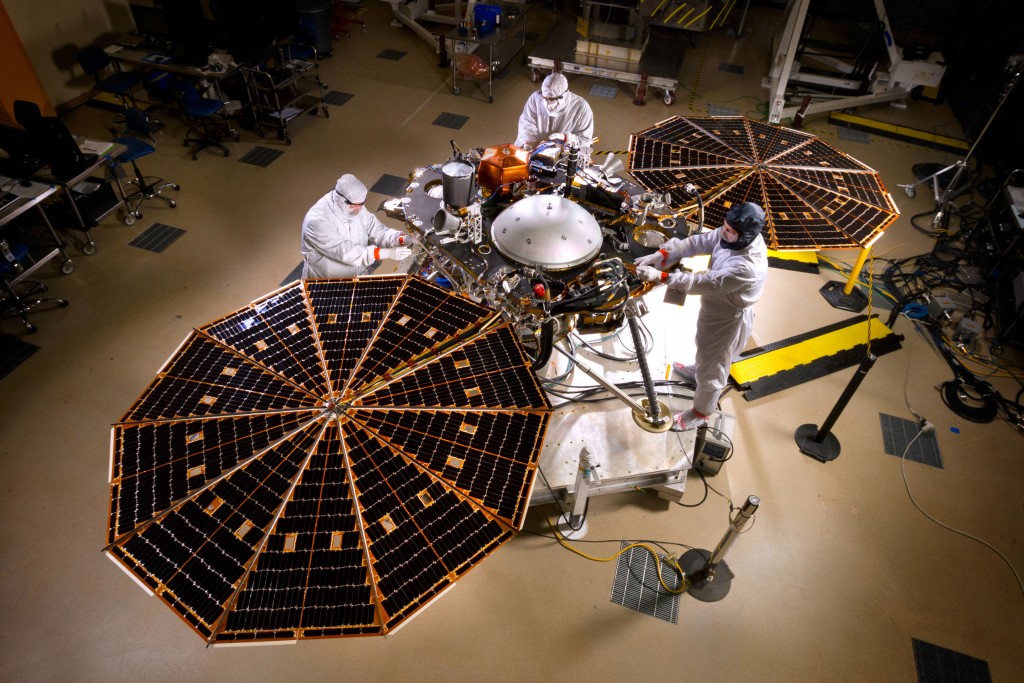Dr. Mark Panning featured on Fox 35 Orlando News at 10
In September 2016 the NASA InSight mission is scheduled to land the first geophysical instrumentation on Mars. While the Curiosity, Spirit and Exploration rovers continue to capture detailed images and geological data from the Red Planet’s surface, InSight will be the first lander to investigate its deep interior. Dr. Mark Panning, Assistant Professor in the Department of Geological Sciences at UF, is a member of a large international team of scientists and engineers working to place a seismometer on Mars to listen for Marsquakes.
One of Dr. Panning’s research goals as part of the InSight project is to address an inherent problem with collecting seismological data more than 140 million miles away — there will be only one seismometer. A recent paper published by Panning et al., described a variety of methods applied to data from a single seismic station that should be able to resolve the structure of the Martian mantle.
“One of our big challenges early on was to demonstrate how InSight could determine the interior structure of Mars with just one seismic station when much of the work on Earth relies on large networks. We showed that we could locate Marsquakes with just one station well enough to determine the structure inside Mars with less than 10 events.” — Dr. Mark Panning.
On Friday, May 29, 2015, Fox35 Orlando News at 10 featured an interview with Dr. Panning about the scientific goals of the mission. NASA hopes that by October 2016 InSight will be returning data to Earth that can be used to determine Mars’ interior structure and heat flow, and gain “InSight” into the early evolution of the planet.
*Actually, there have been several seismometers destined to study Mars’ deep interior, but unfortunately they have all failed at various stages of the journey. Viking 1 and 2 in the late 1970s came the closest by actually landing the seismometers on the surface, but both failed to obtain seismological data.
Watch: Dr, Mark Panning on Fox35 News at 10
Read: The Independent Florida Alligator News Feature
InSight Mission Fact Sheet: InSight Mission
Icarus Article: Panning et al., 2015

Image sources: NASA/JPL-Caltech.
Citation: Panning, M. P., Beucler, E., Drilleau, M., Mocquet, A., Lognonné, P., Banerdt, W. B., Verifying single-station seismic approaches using Earth-based data: Preparation for data return from the InSight mission to Mars, Icarus, Volume 248, 1 March 2015, Pages 230-242, http://dx.doi.org/10.1016/j.icarus.2014.10.035.
